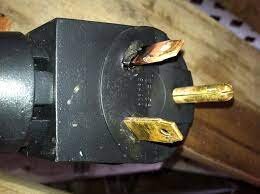NSRV
Well-known member
Okay so my RV's (2018 Jayco Redhawk 22J) generator transfer switch melted down and almost caught fire last night... (Luckily I smelled the smoke and quickly disconnected power and inspected...) Found a loose connection on the board from a improperly assembled wiring bridge. One of the screws on the bridge was barely finger tight and the wire was not properly installed into the bridge so the screw would've never been able to properly tighten it down. I just got some new 10 ga. wire, heat shrink, tight crimps and bypassed the faulty bridge and replaced the wiring that burned up. No one has been in this area before (that I know of) to work or make repairs, it was faulty from the factory. The repair I made seems to be working fine, and yes I tested it very vigorously, the cause was the loose connection on the bridge.
The generator transfer switch is a Progressive Dynamics 5100 Series (PD5110610). Is this a common issue? I'm a little disappointed that something like this was so carelessly assembled, and grateful that my RV didn't burn to the ground (it would have if I hadn't immediately acted.)... I would like to know if I need to replace the generator transfer switch with a different safer model or was this just a one in a million chance fluke?
The generator transfer switch is a Progressive Dynamics 5100 Series (PD5110610). Is this a common issue? I'm a little disappointed that something like this was so carelessly assembled, and grateful that my RV didn't burn to the ground (it would have if I hadn't immediately acted.)... I would like to know if I need to replace the generator transfer switch with a different safer model or was this just a one in a million chance fluke?

